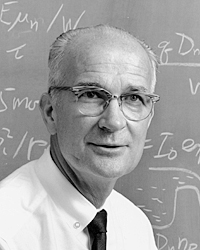William Shockley (nonfiction): Difference between revisions
Jump to navigation
Jump to search
No edit summary |
No edit summary |
||
| (One intermediate revision by the same user not shown) | |||
| Line 13: | Line 13: | ||
== Fiction cross-reference == | == Fiction cross-reference == | ||
* [[Crimes against physical constants]] | |||
* [[Gnomon algorithm]] | |||
* [[Gnomon Chronicles]] | |||
== Nonfiction cross-reference == | == Nonfiction cross-reference == | ||
* [[Point-contact transistor (nonfiction)]] | * [[Point-contact transistor (nonfiction)]] | ||
* [[Walter Houser Brattain (nonfiction)]] | |||
External links: | External links: | ||
| Line 22: | Line 27: | ||
* [https://en.wikipedia.org/wiki/William_Shockley William Shockley] @ Wikipedia | * [https://en.wikipedia.org/wiki/William_Shockley William Shockley] @ Wikipedia | ||
[[Category:Nonfiction (nonfiction)]] | [[Category:Nonfiction (nonfiction)]] | ||
| Line 29: | Line 33: | ||
[[Category:Mathematicians (nonfiction)]] | [[Category:Mathematicians (nonfiction)]] | ||
[[Category:Physicists (nonfiction)]] | [[Category:Physicists (nonfiction)]] | ||
[[Category:Scientists (nonfiction)]] | |||
Latest revision as of 17:30, 12 August 2019
William Bradford Shockley Jr. (/ˈʃɑːkli/; February 13, 1910 – August 12, 1989) was an American physicist and inventor.
Shockley was the manager of a research group that included John Bardeen and Walter Brattain. The three scientists invented the point-contact transistor in 1947 and were jointly awarded the 1956 Nobel Prize in Physics.
Shockley's attempts to commercialize a new transistor design in the 1950s and 1960s led to California's "Silicon Valley" becoming a hotbed of electronics innovation.
In his later life, Shockley was a professor of electrical engineering at Stanford University, and became a proponent of eugenics.
In the News
Fiction cross-reference
Nonfiction cross-reference
External links:
- William Shockley @ Wikipedia
